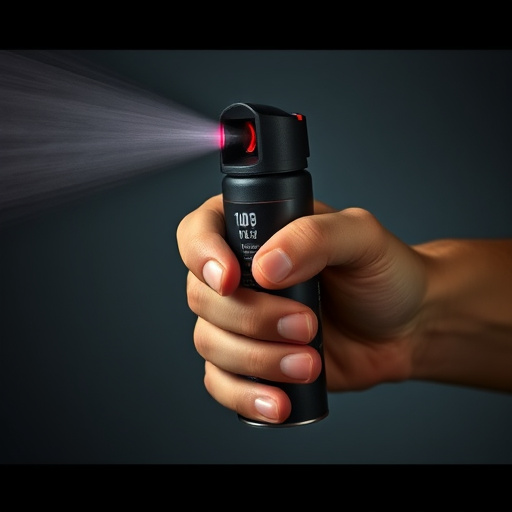Concealed pepper spray carrying techniques empower civilians with a vital self-defense tool. By securing inflammatory sprays in discreet locations like pockets or key fobs, individuals ensure ready access during emergencies. Best practices involve practicing different carrying methods, regular testing for swift reaction, and understanding local laws to maintain compliance and safety. Responsible handling of concealed pepper spray offers a powerful yet non-lethal option for personal protection across diverse scenarios.
“In today’s unpredictable world, civilians are increasingly looking for ways to protect themselves. One effective tool gaining popularity is concealed pepper spray, offering a powerful yet legal self-defense option. This article delves into the realm of inflammatory sprays tailored for civilian use, focusing on understanding their effectiveness, mastering concealed carrying techniques, and navigating crucial legal considerations.
Learn about the best practices for carrying this potent self-defense mechanism discreetly while ensuring safety and adhering to legal boundaries.”
- Understanding Inflammatory Sprays for Civilian Protection
- Concealed Pepper Spray Carrying Techniques: Methods and Best Practices
- Legal Considerations and Safety Precautions for Civilian Use of Pepper Spray
Understanding Inflammatory Sprays for Civilian Protection
Inflammatory sprays, often referred to as pepper spray, are non-lethal self-defense tools that have gained significant popularity for civilian protection. These aerosol compounds contain capsaicin, the active ingredient found in chili peppers, which causes a burning sensation and temporary incapacitation when sprayed into the eyes and respiratory system of an aggressor. Understanding how these sprays work is crucial when considering them as a personal safety measure.
For civilians looking to protect themselves, learning concealed pepper spray carrying techniques is essential. Pepper spray can be carried discreetly in pockets, purses, or specialized holsters, ensuring its ready availability during emergencies. Training in proper usage and awareness of local laws regarding self-defense weapons are key steps before considering this method of protection. With the right knowledge and responsible handling, inflammatory sprays offer a powerful yet non-lethal option for personal safety in various civilian scenarios.
Concealed Pepper Spray Carrying Techniques: Methods and Best Practices
When considering concealed pepper spray carrying techniques for civilian protection, the primary goal is to ensure accessibility and discreteness. Pepper spray can be a powerful tool in deterring potential threats, but it must be easily reachable yet not obvious. One popular method involves securing the spray in an everyday object, such as a key fob or a wallet. This technique allows for quick deployment while maintaining a low profile. The key is to choose a secure attachment point that won’t accidentally trigger the spray and ensure it’s readily within reach when needed.
Best practices dictate practicing different holding and carrying methods to find what feels most comfortable and natural. For instance, some opt to keep the spray in their pocket, while others prefer attaching it to their belt loop or lanyard around their neck. Regularly testing these techniques can help individuals develop a muscle memory response, enabling them to react swiftly and effectively during emergencies. Additionally, familiarity with local laws regarding pepper spray ownership and carry is essential to ensure compliance and peace of mind.
Legal Considerations and Safety Precautions for Civilian Use of Pepper Spray
When considering civilian use of inflammatory spray, or pepper spray, for self-defense, it’s crucial to understand the legal landscape and safety precautions surrounding its possession and application. Each jurisdiction has specific laws governing the use and carrying of such devices, with some regions allowing concealed pepper spray while others restrict its use to visible locations. It’s essential for individuals to familiarize themselves with local regulations to ensure compliance and avoid legal repercussions.
Safety is paramount when handling any type of inflammatory spray. Users must be trained in proper application techniques and understand the potential risks and side effects, such as respiratory irritation or prolonged vision impairment. Responsible ownership includes storing the spray in a secure location, keeping it out of reach of children and unauthorized individuals, and regularly inspecting the device for functionality. Concealed pepper spray carrying techniques should prioritize comfort and accessibility, ensuring that the user can quickly deploy the spray when needed while adhering to legal requirements.
Inflammatory sprays, particularly concealed pepper spray, offer civilians an effective tool for self-defense. Understanding their operation, mastering concealed carrying techniques, and adhering to legal guidelines ensure responsible usage. By embracing best practices and safety precautions, individuals can protect themselves and their loved ones in various scenarios, making concealed pepper spray a valuable addition to personal safety arsenals.
